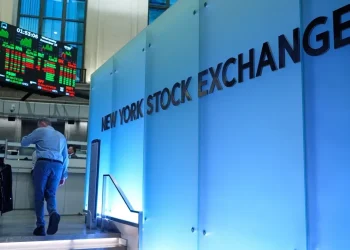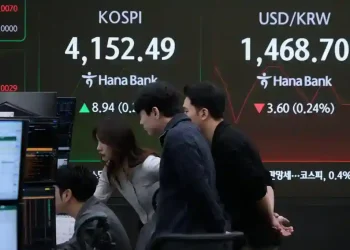Federal Reserve Faces Tough Choice Between Inflation Control and Job Market Support
Published Time: 08-15-2025, 16:00
As the Federal Reserve prepares for its annual Jackson Hole conference next week and a crucial September policy meeting, officials remain divided on the most pressing challenge for the U.S. economy: persistent inflation or slowing job growth.
The Fed’s upcoming decisions will be closely watched by investors and economists, as signals from policymakers will influence borrowing costs, financial markets, and the broader economy.
Weaker Job Gains Fuel Debate Over Rate Cuts
Recent labor data have complicated the Fed’s path forward. Weak job growth since April has prompted some officials to support a potential cut in the central bank’s key interest rate as soon as September. However, other members continue to view inflation as a significant concern that may warrant maintaining current rates.
“The slowdown in aggregate demand and soft labor market indicators suggest we should focus on employment risks,” said Michelle Bowman, a member of the Fed’s Board of Governors. Bowman emphasized that underlying inflation is trending toward the Fed’s 2% target, allowing some flexibility to prioritize job creation.
July’s monthly jobs report highlighted the challenge: average monthly job gains for May, June, and July fell to 35,000—a sharp drop from 123,000 a year ago—raising concerns about economic momentum.
Inflation Remains a Core Concern
Despite weaker hiring, many Fed officials caution that inflation is not fully contained. Austan Goolsbee, president of the Federal Reserve Bank of Chicago, noted that while job growth has slowed, the unemployment rate remains low at 4.2%, signaling a resilient labor market.
“The job slowdown may partly reflect reduced immigration rather than a weakening economy,” Goolsbee told reporters. He also pointed to rising prices in services such as dental care and air travel, which are not directly affected by tariffs, as a warning sign that inflation could remain elevated.
Tariffs and the Uncertain Inflation Outlook
Federal Reserve officials continue to debate the impact of tariffs on future inflation. Mary Daly, president of the Fed’s San Francisco branch, suggested that recent trade duties may cause a temporary price increase but are unlikely to trigger long-term inflation pressures.
Conversely, Raphael Bostic, president of the Fed’s Atlanta branch, warned that tariffs could create structural changes if manufacturers shift production from low-cost overseas locations to higher-cost domestic facilities or other countries with higher wages. “This is more than a one-time effect—it fundamentally changes the economy,” Bostic said. He added that with low unemployment, the Fed has the luxury to wait for clearer data before acting.
Market Expectations and Policy Uncertainty
Wall Street investors currently anticipate a rate cut in September, with CME FedWatch futures indicating a 93% probability. This optimism increased after August 1’s jobs report revealed weaker hiring than initially estimated.
However, recent wholesale price data may temper expectations for aggressive cuts. The July wholesale price report showed significant price increases for goods and services before reaching consumers, making a larger half-point reduction in September less likely. Alberto Musalem, president of the Fed’s St. Louis branch, described such a move as “unsupported by the current state of the economy and the outlook.”
Economists also caution that the Fed’s inflation projections may need adjustment. Tim Duy of SGH Macro noted that inflation, excluding volatile food and energy prices, is forecast to reach 3.1% by year-end—already near current levels—making a rate cut more challenging if policymakers anticipate continued price pressures.
Jerome Powell’s Speech Will Be Closely Watched
With uncertainty surrounding both jobs and inflation data, all eyes are on Fed Chair Jerome Powell’s upcoming speech at the Jackson Hole conference. Observers expect Powell’s remarks to provide critical insight into the Fed’s thinking ahead of the September 16-17 meeting.
“If inflation risks materialize or tariffs begin to affect prices more persistently, the Fed may have to reconsider a rate reduction,” Duy said. “There are factors that could push policymakers off the expected path.”
Balancing Dual Mandates
The Federal Reserve is navigating a delicate balance between its dual mandates: promoting maximum employment and stabilizing prices. Some officials prioritize supporting the labor market amid signs of slowing hiring, while others remain cautious to avoid reigniting inflation pressures that could undermine long-term economic stability.
As the Fed approaches its September meeting, investors, policymakers, and businesses will be analyzing each new jobs and inflation report for clues on the central bank’s next move. How the Fed weighs these competing concerns will have significant implications for the U.S. economy and financial markets in the coming months.
This article was rewritten by JournosNews.com based on verified reporting from trusted sources. The content has been independently reviewed, fact-checked, and edited for accuracy, neutrality, tone, and global readability in accordance with Google News and AdSense standards.
All opinions, quotes, or statements from contributors, experts, or sourced organizations do not necessarily reflect the views of JournosNews.com. JournosNews.com maintains full editorial independence from any external funders, sponsors, or organizations.
Stay informed with JournosNews.com — your trusted source for verified global reporting and in-depth analysis. Follow us on Google News, BlueSky, and X for real-time updates.














